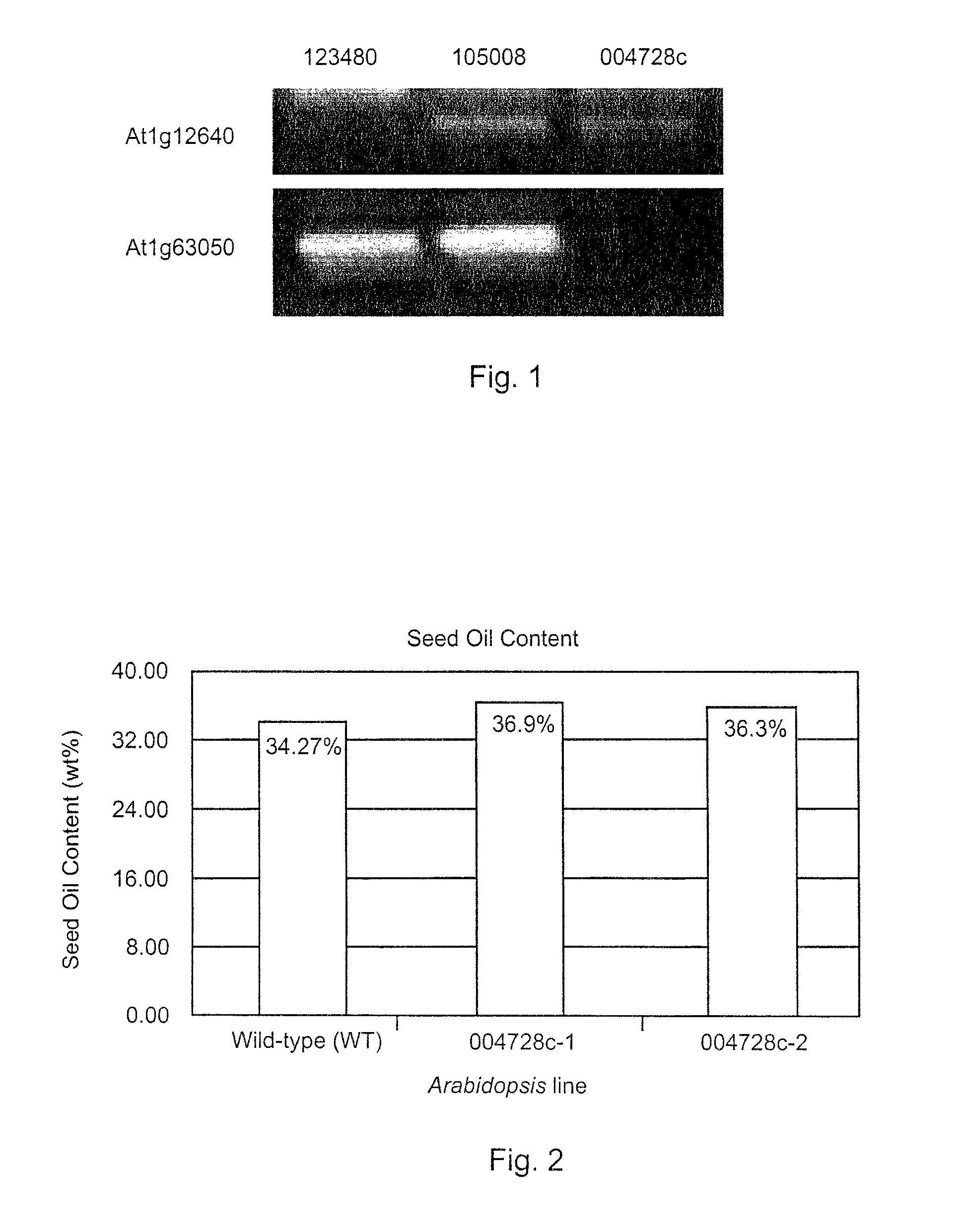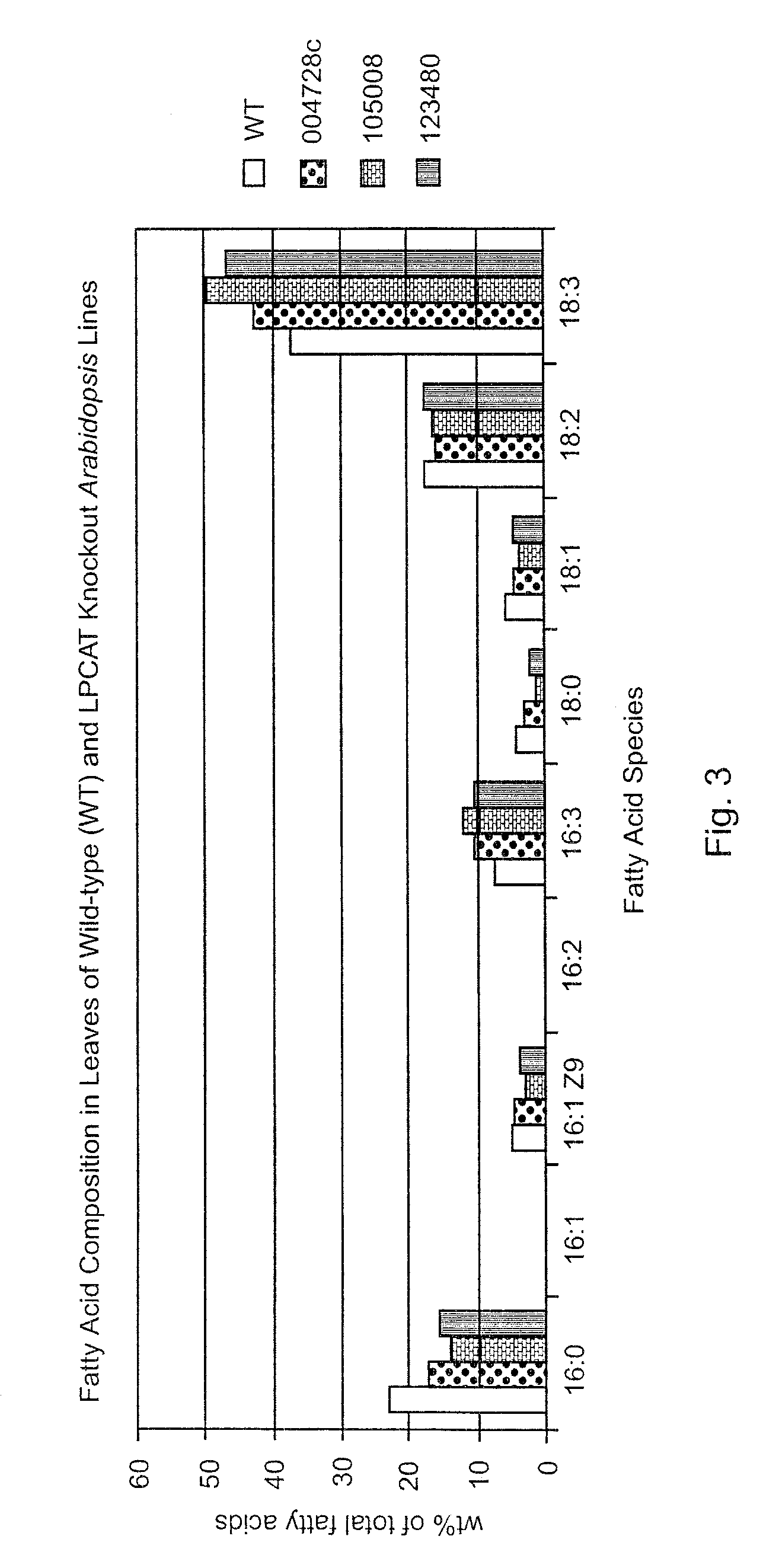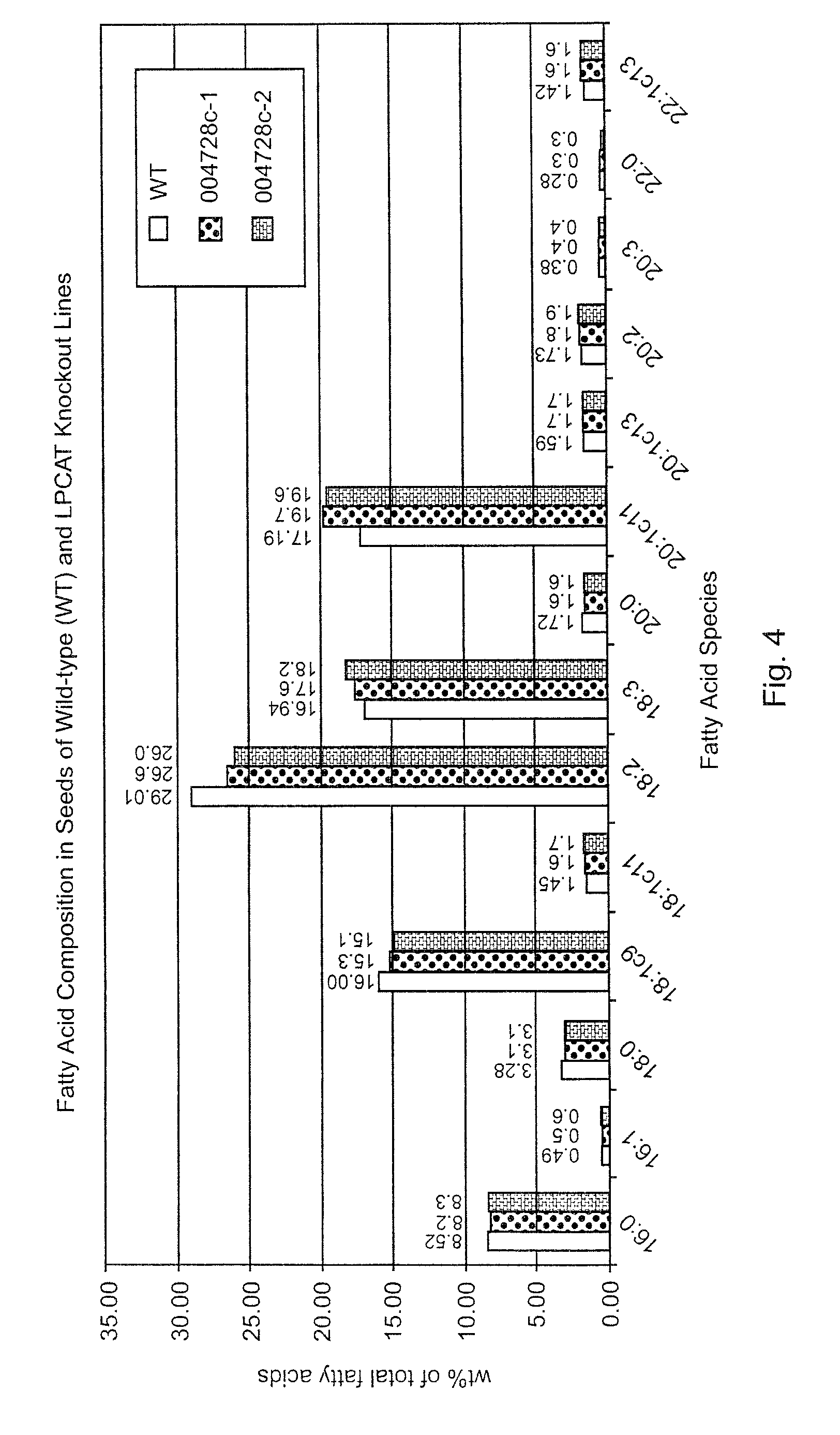Reduction of lyso-phosphatidylcholine acyltransferase activity
a lysophosphatidylcholine acyltransferase and acyltransferase technology, applied in the field of biotechnology, can solve the problems of not describing the effect of reducing lpcat activity on oil content and fatty acid levels, and the fatty acid reacylation of industrial feedstocks has met difficulty in reaching a level of commercial significance, so as to reduce the activity of lpcat and reduce the reacylation rate of lp
- Summary
- Abstract
- Description
- Claims
- Application Information
AI Technical Summary
Benefits of technology
Problems solved by technology
Method used
Image
Examples
example 1
Arabidopsis thaliana Mutants
[0040]A. thaliana has two LPCAT genes denoted At1g63050 and At1g12640. Mutant lines 105008 and 004728c defective in At1g63050 and mutant line 123480 defective in At1g12640 were generated. Mutant line 105008 is reduced in the transcript At1g63050 but the transcript still exists therein. The At1g63050 transcript is completely absent from mutant line 004728c. The At1g12640 transcript is completely absent from mutant line 123480. These knockout lines were supplied by the ABRC stock center as line SALK—105008, SALK—004728C and SALK—123480. They were generated by T-DNA insertions in the Arabidopsis (Columbia ecotype) genome.
[0041]Referring to FIG. 1, a RT-PCR experiment of LPCAT gene expression clearly shows that LPCAT gene expression was severely compromised in the 123480 and 004728c lines. Total RNA was extracted from Arabidopsis leaf tissues of various knockout lines with RNeasy Mini Kit (QIAGEN). First-strand cDNA was synthesized with SuperscriptII™ Synthes...
example 2
Seed Oil Content in Knockout Mutants
[0042]Seed oil content in wild-type (WT) A. thaliana was compared to seed oil content in the A. thaliana knockout mutant line 004728c. Mutant line 004728c is a knockout mutant of At1g63050. Lines 004728c-1 and 004728c-2 are two independent lines grown under identical conditions along with the wild-type as control.
[0043]Oil content analysis was performed according to the following protocol. Dried seeds (about 5 mg) were weighed on an analytical balance and put into a glass tube (1 cm×10 cm) with Teflon™-lined screw cap was pre-rinsed thoroughly with chloroform and dried to remove any contaminating lipid residues. To this tube was added 1 ml of 5% (v / v) conc. sulfuric acid in MeOH (freshly prepared for each use), 25 μl of BHT solution (0.2% butylated hydroxy toluene in MeOH), 500 μg of 15:0 TAG (internal standard) and 300 μl of toluene as co-solvent. The mixture was vortexed for 30 s then heated at 90-95° C. for 1.5 h. After cooling to room temperat...
example 3
Fatty Acid Composition in Knockout Mutants
[0045]Fatty acid composition in wild-type (WT) A. thaliana was compared to fatty acid composition in A. thaliana mutant lines. Fatty Acid and Lipid Analysis was performed according to the following protocol. Fatty acids in Arabidopsis were extracted with 2 ml of 10% KOH in methanol at 80° C. for 2 hr, followed by cooling and the addition of 1 ml of 50% HCl. Freed fatty acids were then extracted with 2 ml hexane, and dried under N2. To each sample was then added 2 ml of 3 N methanol-HCl, followed by heating at 80° C. for 2 hr. After the addition of 2 ml of 0.9% NaCl solution and hexane, fatty acids were extracted into the organic phase and separated by GC. Lipids extraction and purification by two dimensional TLC on silica gel 60 (EMD chemical, Germany) was done according to the method of Miguel and Browse (1992). Lipids were visualized with iodine vapor. Individual lipids were isolated from TLC plates and used to prepare fatty acid methyl es...
PUM
| Property | Measurement | Unit |
|---|---|---|
| v/v | aaaaa | aaaaa |
| temperature | aaaaa | aaaaa |
| weight | aaaaa | aaaaa |
Abstract
Description
Claims
Application Information
 Login to View More
Login to View More - R&D
- Intellectual Property
- Life Sciences
- Materials
- Tech Scout
- Unparalleled Data Quality
- Higher Quality Content
- 60% Fewer Hallucinations
Browse by: Latest US Patents, China's latest patents, Technical Efficacy Thesaurus, Application Domain, Technology Topic, Popular Technical Reports.
© 2025 PatSnap. All rights reserved.Legal|Privacy policy|Modern Slavery Act Transparency Statement|Sitemap|About US| Contact US: help@patsnap.com



